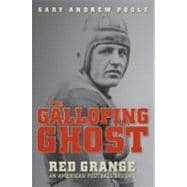
| Author's Note | p. ix |
| Foreword: All-American | p. xi |
| A Boy | p. 3 |
| A Galloping Ghost | p. 13 |
| C. C. Pyle | p. 43 |
| Is He Dead? | p. 51 |
| Iceman | p. 69 |
| America's Hearts and Minds | p. 93 |
| A Passage to Manhood | p. 110 |
| A Pro | p. 129 |
| Cardinals Vs. Bears | p. 142 |
| The Barnstormers | p. 157 |
| "Cash 'N' Carry" | p. 185 |
| Outlaws | p. 198 |
| Amateurs | p. 207 |
| New York, New York, 1926-27 | p. 222 |
| An Athlete's Death | p. 230 |
| A Year to be Forgotten | p. 250 |
| Epilogue: A Ghost | p. 261 |
| Acknowledgments | p. 281 |
| Red Grange's College Record | p. 285 |
| Red Grange's Pro Career | p. 287 |
| Notes on Sources | p. 288 |
| Notes | p. 290 |
| Bibliography | p. 309 |
| Index | p. 312 |
| Table of Contents provided by Ingram. All Rights Reserved. |
The New copy of this book will include any supplemental materials advertised. Please check the title of the book to determine if it should include any access cards, study guides, lab manuals, CDs, etc.
The Used, Rental and eBook copies of this book are not guaranteed to include any supplemental materials. Typically, only the book itself is included. This is true even if the title states it includes any access cards, study guides, lab manuals, CDs, etc.